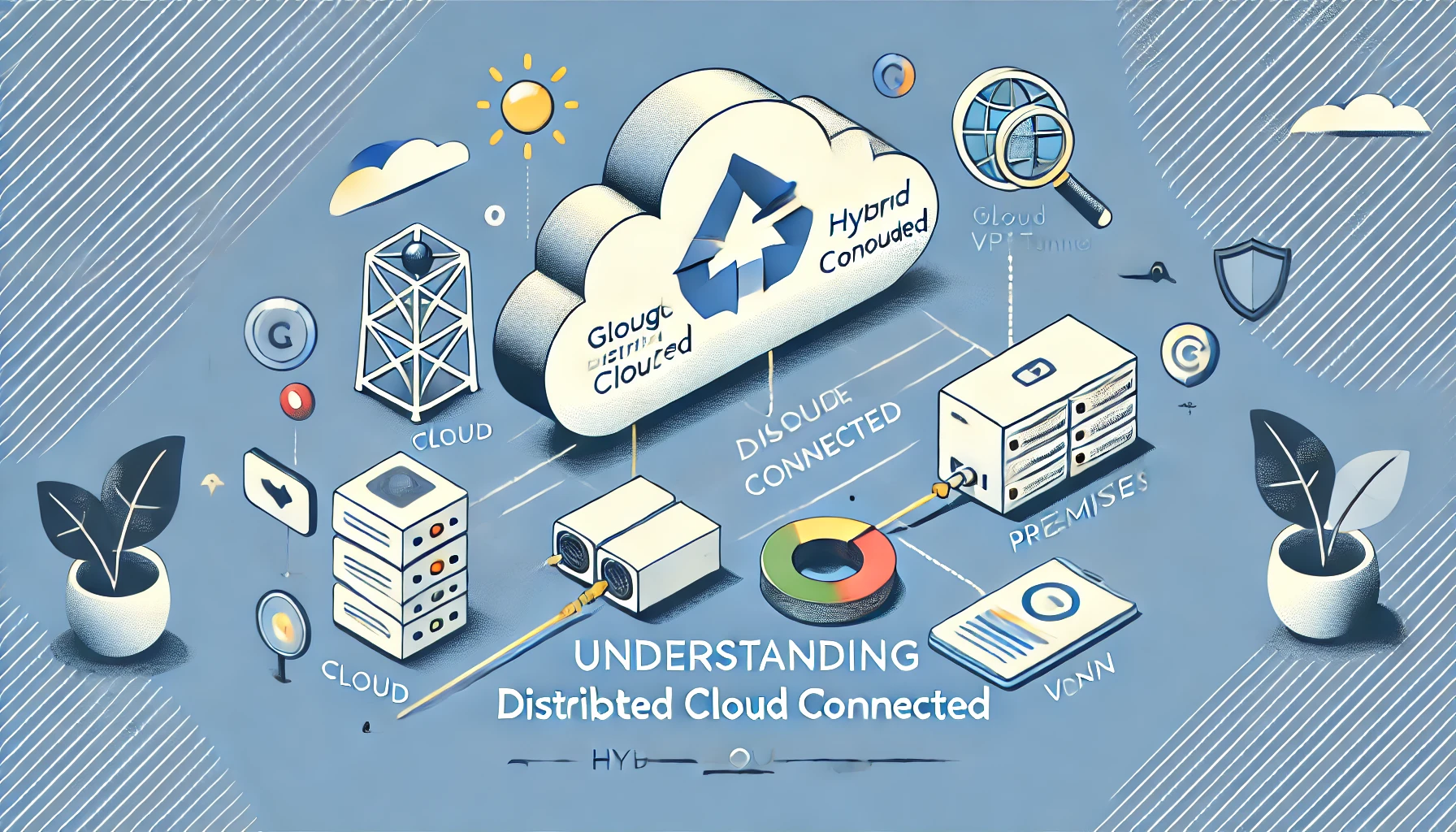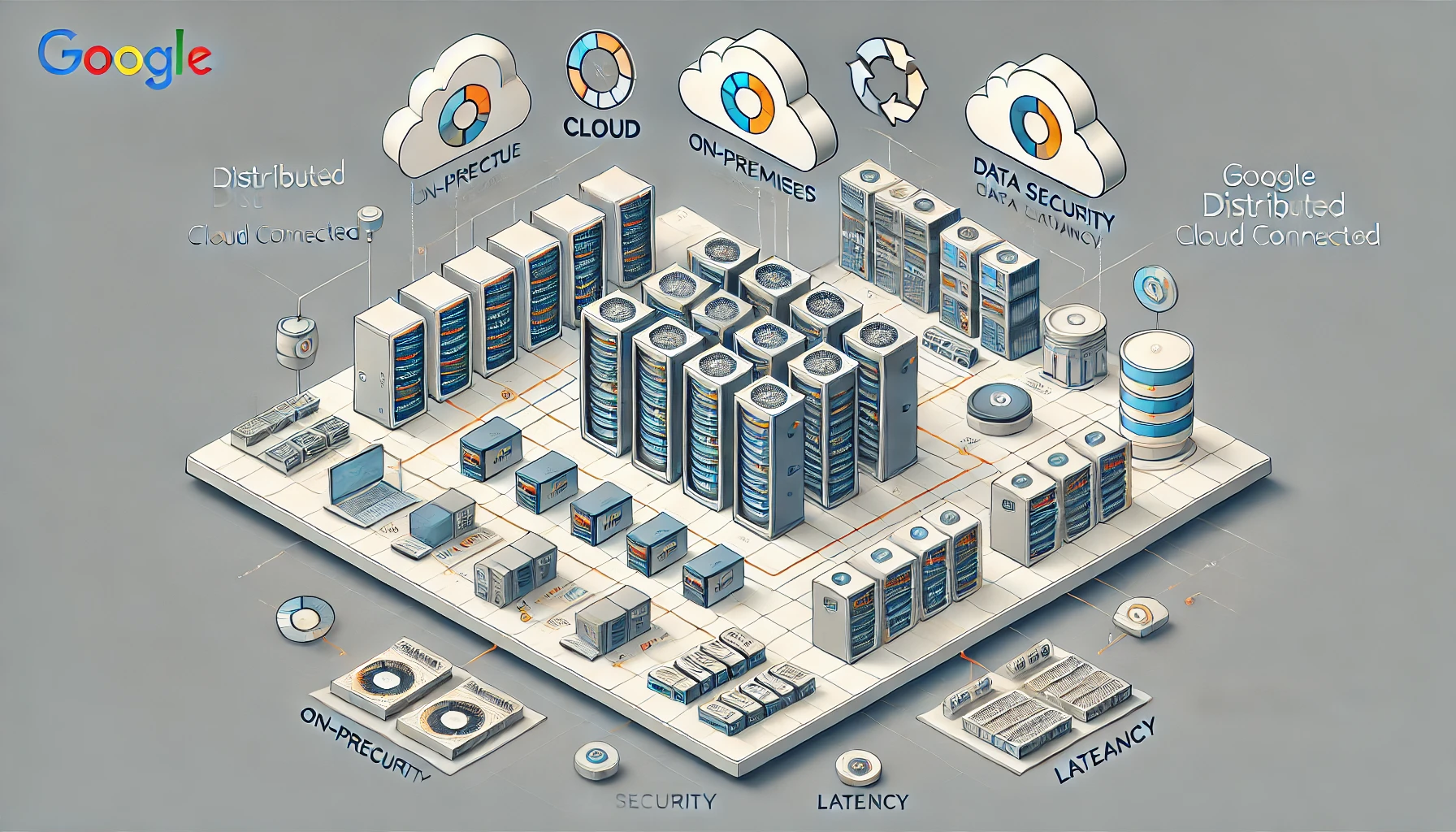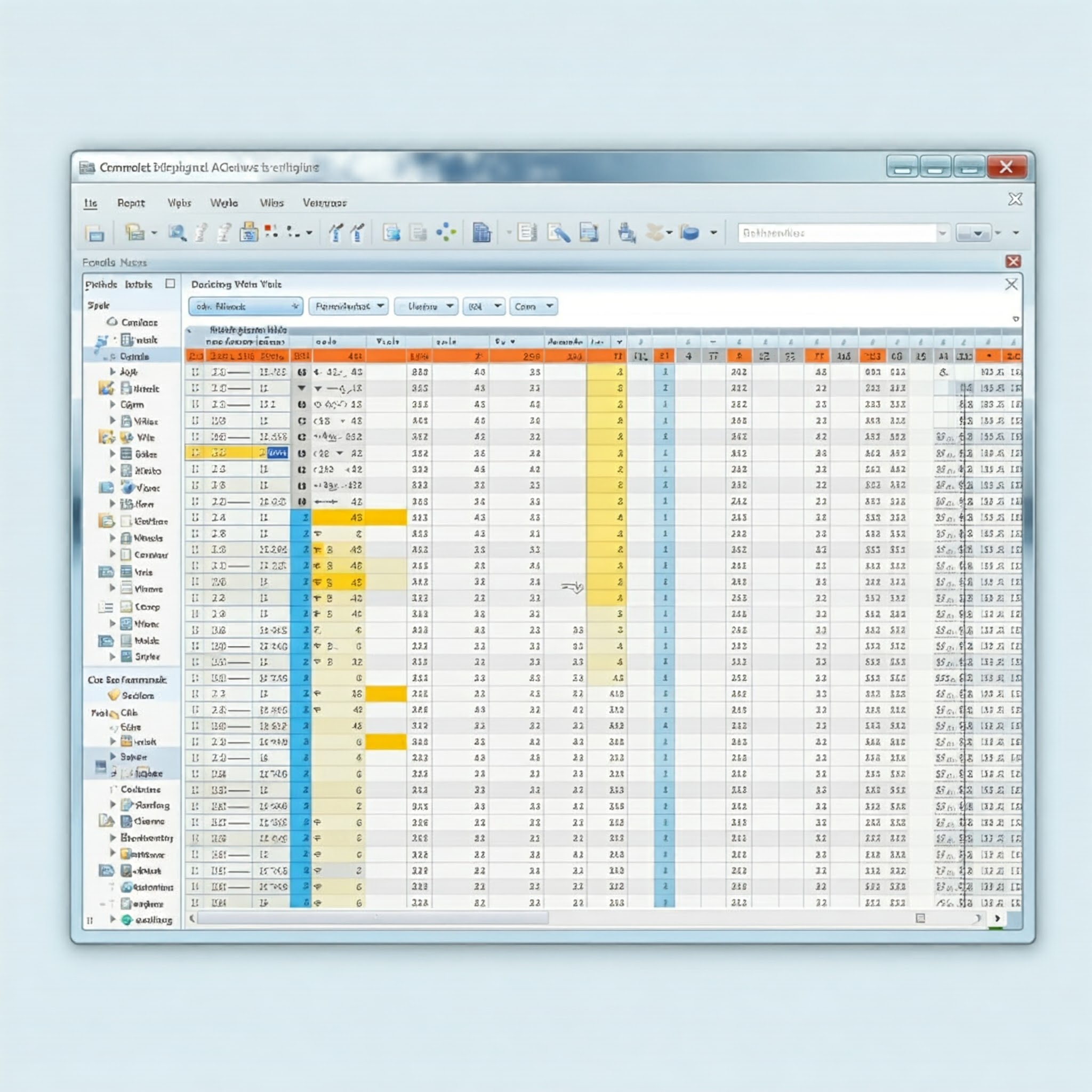Google Distributed Cloud Connected, A Friendly Exploration of Hybrid Cloud Solutions.

Explore the features, benefits, and future potential of Google Distributed Cloud Connected. This hybrid solution brings the power of Google Cloud to on-premises environments for optimal control, security, and compliance.
Introduction
In today’s fast-paced, data-driven world, businesses are increasingly turning to cloud solutions for their scalability, flexibility, and robust performance. However, for many organizations, complete reliance on the public cloud isn’t feasible due to regulatory requirements, latency needs, and data sensitivity concerns. As a result, hybrid cloud solutions, which combine the benefits of on-premises and cloud-based infrastructure, are growing in popularity.
Google Distributed Cloud Connected is one of Google Cloud’s offerings designed to address these exact needs. By allowing organizations to run Google Cloud services within their own data centers, it provides a hybrid approach that combines the power of the cloud with the security, control, and regulatory compliance of on-premises infrastructure. In this in-depth guide, we’ll cover everything you need to know about Google Distributed Cloud Connected, from how it works and its key features to its limitations, use cases, and future potential.
What is Google Distributed Cloud Connected?
At its core, Google Distributed Cloud Connected enables organizations to deploy Google Cloud services within their own data centers, essentially creating a “mini Google Cloud” on-premises. This unique setup is made possible by using dedicated hardware provided and managed by Google, but physically located wherever the organization requires it.
This service operates through a secure VPN connection that establishes a private and secure tunnel between the on-premises hardware and Google Cloud’s main environment. By doing so, it allows organizations to utilize Google Cloud services, like Google Kubernetes Engine (GKE), to manage containerized applications on their premises while still benefiting from Google’s support and maintenance.
Key Benefits of Google Distributed Cloud Connected
Google Distributed Cloud Connected brings the following advantages:
- Enhanced Security and Compliance: By keeping sensitive data on-premises, organizations can ensure compliance with strict data regulation laws and industry standards.
- Low Latency for Real-Time Processing: It enables faster response times by processing data close to its source, which is critical for industries like finance and healthcare.
- Reduced Dependency on Internet Connectivity: By hosting applications on-site, organizations can reduce downtime caused by unreliable Internet connections.
- Simplified IT Management: Google handles updates, security patches, and maintenance, helping organizations with limited IT resources maintain optimal system health.
How Does Google Distributed Cloud Connected Work?
Google Distributed Cloud Connected operates through Google-managed hardware hosted within an organization’s facilities. This hardware includes components like servers and network switches, customized to provide the same Google Cloud experience, but within an organization’s data center.
Developer Experience: Familiarity with Google Kubernetes Engine (GKE)
For developers already using Google Cloud services, particularly Google Kubernetes Engine (GKE), working with Google Distributed Cloud Connected will feel intuitive. GKE is a managed Kubernetes service that helps orchestrate containers—individual application components that are isolated from each other for improved security and scalability. By using GKE, developers can seamlessly manage containerized applications across on-premises and cloud environments, ensuring consistency and ease of deployment.
Developers can manage the on-premises GKE clusters using the same Google Cloud Console, CLI, and APIs they’re accustomed to. This interoperability between on-premises and cloud environments allows for multi-cloud deployment strategies, giving developers the flexibility to build, test, and deploy applications where it makes the most sense.
Hardware Options for Google Distributed Cloud Connected
Google offers several hardware configurations to suit different operational needs, from large-scale enterprise applications to smaller, department-specific workloads. Here’s a breakdown of the primary options:
- Distributed Cloud Connected Rack: This configuration provides a full rack that includes six servers and two top-of-rack switches, suitable for high-demand workloads. It is ideal for large organizations or data-intensive applications that require powerful, on-premises infrastructure with low latency.
- Distributed Cloud Connected Server: Google offers a single-server configuration for smaller-scale deployments. This option is more compact and integrates seamlessly with an organization’s existing network infrastructure, making it ideal for departmental use or smaller enterprises.
Key Benefits of Hardware Customization
These hardware options allow organizations to choose a setup that aligns with their current workload demands and scalability needs. By offering both single-server and full-rack configurations, Google Distributed Cloud Connected enables organizations to optimize costs and resources according to their specific requirements.
Benefits and Use Cases of Google Distributed Cloud Connected
Google Distributed Cloud Connected provides several significant advantages, particularly for organizations that operate in regulated industries or require high-performance infrastructure. Here are some of the primary benefits:
1. Networking Stability and Reduced Downtime
One of Google Distributed Cloud Connected’s greatest advantages is its ability to minimize internet dependency. Since data is processed locally, organizations can avoid the delays and downtime associated with unstable internet connections. This setup is particularly useful for mission-critical applications, where even a few seconds of downtime can have significant financial or operational consequences.
2. Ultra-low latency for Real-Time Applications
Low latency is crucial for applications that require real-time responses in industries such as finance, manufacturing, and healthcare. By keeping processing close to the source, Google Distributed Cloud Connected significantly reduces latency, making it ideal for high-frequency trading, real-time medical diagnostics, and automated manufacturing controls.
3. Data Handling Capabilities for Massive Datasets
Many organizations generate vast amounts of data daily, and transferring this data to the cloud can be both costly and time-consuming. Google Distributed Cloud Connected enables businesses to handle data locally, avoiding bandwidth limitations and transfer costs associated with large data volumes. This is especially beneficial for data-heavy industries like video production, genomics, and autonomous vehicle development.
4. Compliance with Data Sovereignty and Data Residency Laws
Industries such as healthcare and finance are subject to stringent data protection regulations that mandate local storage and processing of data. Google Distributed Cloud Connected allows organizations to leverage the cloud’s power while remaining compliant with these regulations, making it an ideal solution for data-sensitive sectors like healthcare, banking, and government.
5. Simplified Management and Google Support
Google Distributed Cloud Connected is fully managed by Google, including monitoring, maintenance, security patches, and troubleshooting. This takes a significant load off organizations’ IT teams, allowing them to focus on core business functions rather than on hardware upkeep. For companies with limited IT resources, Google’s support and management can provide peace of mind and ensure smooth operations.
Limitations and Trade-Offs of Google Distributed Cloud Connected
While Google Distributed Cloud Connected offers a unique combination of on-premises control and cloud-based power, it has a few limitations that organizations should consider:
1. Limited Scalability Compared to the Cloud
One of the public cloud’s main benefits is its ability to scale resources up or down based on demand. Google Distributed Cloud Connected, however, relies on physical on-premises hardware, meaning scalability is constrained by the hardware’s capacity. For businesses that anticipate rapid growth or fluctuating workloads, this limitation could be restrictive.
2. Compatibility Issues with Certain Workloads
While Google Distributed Cloud Connected supports many applications, it does not support all Google Cloud services. For instance, Cloud Spanner, Google’s horizontally scalable, strongly consistent database service, is not currently available with Distributed Cloud Connected. Organizations relying on these specific cloud-native services may need to reconsider this solution.
3. Physical Access Requirements for Hardware Maintenance
Although Google manages maintenance and troubleshooting, some hardware issues may require physical access. In such cases, authorized Google personnel may need to access the hardware directly, which could be disruptive for some organizations. This level of intervention, though infrequent, could be a drawback for companies with strict physical security requirements.
The Future of Google Distributed Cloud-Connected
The future potential of Google Distributed Cloud Connected aligns with several emerging technology trends, which may further enhance its value proposition for modern businesses:
1. Edge Computing
Edge computing transforms data processing by bringing it closer to where it’s generated. With Google Distributed Cloud Connected, businesses can distribute computing power across cloud and edge environments, making it well-suited for edge computing applications. This setup is beneficial for IoT devices, autonomous vehicles, and smart cities, where low-latency processing is essential for real-time decision-making.
2. Evolving Data Sovereignty Laws
As data protection laws worldwide become increasingly stringent, more organizations need solutions that allow them to retain control over their data while still leveraging cloud capabilities. Google Distributed Cloud Connected offers a valuable solution for companies operating in countries with strict data sovereignty laws by enabling on-premises processing and storage while providing access to Google Cloud’s broader ecosystem.
3. AI and Machine Learning on the Edge
In the coming years, AI and machine learning (ML) are expected to become central to business operations, and many of these applications will need to run close to the data source for rapid response times. Google Distributed Cloud Connected can support AI and ML workloads on the edge, enabling businesses to perform inferences and analytics locally. This could be especially valuable for retail, manufacturing, and autonomous systems, where low-latency, high-performance processing is essential.
Conclusion
Google Distributed Cloud Connected is a powerful hybrid solution for businesses seeking the benefits of cloud computing without sacrificing the control and security of on-premises infrastructure. With its focus on low latency, data sovereignty, and ease of management, it provides a unique bridge between the cloud and on-premises environments, catering to the complex needs of regulated industries and real-time applications.
As the demand for hybrid solutions continues to grow, Google Distributed Cloud Connected stands out as a forward-looking option that is well-equipped to support edge computing, data sovereignty, and AI-driven applications. By addressing both current and emerging business requirements, it is likely to play an increasingly important role in the future.
1. What is Google Distributed Cloud Connected?
Answer: Google Distributed Cloud Connected is a hybrid solution that allows organizations to run Google Cloud services on their own premises. By combining cloud capabilities with on-premises control, it provides a secure and compliant environment for data-sensitive and latency-critical applications.
2. How is Google Distributed Cloud Connected different from Google Cloud?
Answer: Unlike the traditional Google Cloud, which is hosted entirely offsite, Google Distributed Cloud Connected uses dedicated hardware located within an organization’s data center. This setup provides the control of on-premises infrastructure with the power of Google Cloud services.
3. What industries benefit the most from Google Distributed Cloud Connected?
Answer: Industries with strict data sovereignty regulations and latency-sensitive applications benefit most. This includes finance, healthcare, manufacturing, and government sectors that need to keep data on-premises while leveraging the cloud’s computational power.
4. How does Google Distributed Cloud Connected ensure data security and compliance?
Answer: By keeping data and processing on-premises, Google Distributed Cloud Connected helps organizations comply with local data residency laws. Additionally, Google handles maintenance, security patches, and monitoring, ensuring robust security standards.
5. Can Google Distributed Cloud Connected scale as easily as public cloud services?
Answer: No, scaling is constrained by the physical hardware capacity on-site. While it provides powerful local computing, scaling up is less flexible than in a pure cloud environment. It’s suitable for businesses with predictable or stable workload requirements.
6. What are the hardware options available for Google Distributed Cloud Connected?
Answer: Google offers two hardware configurations: the Distributed Cloud Connected Rack, which includes six servers and is designed for large workloads, and the Distributed Cloud Connected Server, a single server for smaller deployments.
7. Is Google Distributed Cloud Connected compatible with all Google Cloud services?
Answer: No, not all Google Cloud services are supported on Distributed Cloud Connected. Services like Cloud Spanner are currently unavailable. Businesses should review compatibility based on their specific application needs.
8. How does Google Distributed Cloud Connected support edge computing?
Answer: Google Distributed Cloud Connected is designed to handle low-latency processing close to the data source, making it ideal for edge computing applications. It allows real-time data analysis and processing, crucial for IoT, autonomous vehicles, and smart cities.
9. What is the developer experience like with Google Distributed Cloud Connected?
Answer: For developers, working with Google Distributed Cloud Connected is similar to using Google Kubernetes Engine (GKE) in the cloud. They can use the same console, CLI, and APIs, simplifying the development and deployment process for hybrid environments.
10. What are the future prospects for Google Distributed Cloud Connected?
Answer: Google Distributed Cloud Connected’s future aligns with trends in edge computing, data sovereignty, and AI. It is expected to support more advanced applications as demand for hybrid solutions and real-time processing continues to grow.
RECOMMENDATION & REFERENCE:
♥ We recommended listing the Audio podcast from the link: Connecting Your Hybrid Cloud Future
Reference from:
- Distributed Cloud connected version 1.7.1 (current)
- Google Cloud Platform
- NotebookLM


